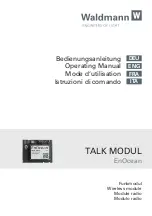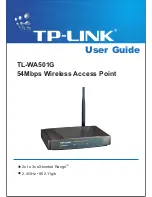
2-38
Cisco BBSM Hotspot 1.0 User Guide
78-15293-01
Chapter 2 Setting Up BBSM Hotspot
Feature Considerations
User-Selected Bandwidth (UBand) Web Pages
User-selected bandwidth (UBand) web pages support a user-specified bandwidth. This feature allows the
administrator to define the service offerings and allows the end user to select from the tiered services
offered directly from the Start page, such as the following:
•
64K for $0.15/minute
•
128K for $0.25/minute
•
Unlimited for $0.30/minute
When a UBand web page is used, BBSM Hotspot throttles the session bandwidth at the kbps value that
the end user selects. This bandwidth value is transmitted to the RADIUS accounting servers in the Start,
Stop, and Interim-Update Accounting-Request packets and BBSM Hotspot ignores any bandwidth value
that the RADIUS authentication servers return in the Access-Accept packets.
The two BBSM Hotspot-provided sample web pages that implement this feature are RADIUSUBand and
RADIUSUBandClear. These web pages can be used as templates to customize the tiered services that
you want to offer.
Note
Note that the administrators must make sure that the RADIUS accounting servers are configured to
accept the bandwidth that BBSM passes in the vendor-specific attribute and to record this attribute value
so the data can be retrieved for billing. The RADIUS provider is responsible for charging the end user
for the selected bandwidth.
When the user disconnects from the session, the Disconnect web page appears and displays the session
summary information: username, session duration (in minutes), and estimated session charge.
Port Hopping
The port hopping feature allows users to move from port to port without interrupting BBSM Hotspot
service. Within a BBSM Hotspot network, users can move between like types of hardware, such as
wireless access points or switch ports. Users cannot hop between wireless access points and wired
switches. Also, mobility across subnets or cells operated by different customers is not allowed.
Table 2-13 RADIUS Cisco BBSM Hotspot-Bandwidth Vendor-Specific Attribute Format
Byte
Value
Description
1
26
Vendor-specific attribute type in accordance with RFC 2865
2
(4 * sizeof (BYTE)) +
(2 * sizeof (DWORD))
The length in bytes of the full attribute specification beginning with
attribute type (byte 1); should come out to 12 if each byte size = 1.
3–6
5263
The vendor-ID value.
7
1
The vendor data type; 1 indicates bandwidth kbps value.
8
(2 * sizeof (BYTE)) +
sizeof (DWORD)
The length in bytes of the vendor-specific portion of the attribute
specification starting with vendor-specific attribute data type. If each
byte size = 1, should come out to 6.
9–12 A bandwidth specified
in kbps; such as 256
Actual bandwidth kbps value (ulong).





































